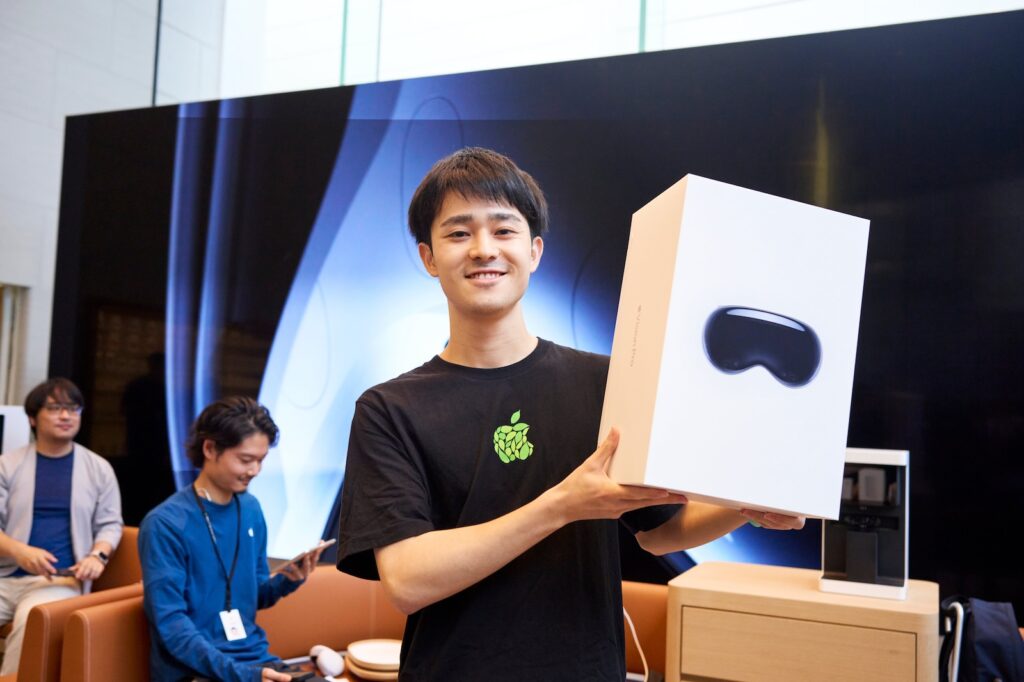Apple has taken a bold step into the world of mixed reality technology with the launch of the Vision Pro in February 2024. The innovative headset offers impressive technical specifications and a wide range of possible applications. But with a price of 4,000 euros, the user base remains small and this is significantly slowing down the development of the visionOS platform. Below you will find out why Apple urgently needs a cheaper model or a price reduction of the Vision Pro to motivate developers to develop apps for the platform and how this could be the key to long-term success.
Apple has proven many times that it is capable of successfully launching new technologies and dominating them. From the iPhone to the Apple Watch, the company has created products that have attracted both the mainstream and developers worldwide. But that doesn't seem to be the case with the Vision Pro. The high price tag has not only scared off many potential buyers but also discouraged developers from developing apps for the platform. And that's where the problem lies: without developers creating innovative and useful applications, the platform cannot grow.
Lack of developer support – a problem for the platform
If you're a tech fan who follows the development of Apple products, you know how important it is for a new platform to have developer support. When the Vision Pro was launched, Apple proudly announced that around 600 apps and games would already be available for visionOS. But by August 2024, there were only 2,500 native apps - a number that fell far short of expectations. The main reason for this is the lack of interest from developers. They see little incentive to develop for a platform that has only a small number of users. This small user base is in turn limited by the high price of the Vision Pro. According to Appfigures, a leading analytics firm, app development for Vision Pro is already on the decline. In September alone, only 10 new apps were released on the Vision Pro App Store, which is an alarming sign for the future of the platform.
High price deters – even developers
With a starting price of $3,500 or €4,000, the Vision Pro is an expensive toy aimed primarily at tech-savvy enthusiasts. For the average user, the device is simply too expensive and that also deters developers. They know that their apps will only reach a limited audience and therefore shy away from the effort of specializing in visionOS. A prominent example is the Icelandic game developer Hrafn Thorisson, who made it clear that his company is in no hurry to develop for Vision Pro. They are waiting for a broader user base and further developments. Scott Albright, the CEO of VR game developer Combat Waffle Studios, also sees no incentive to develop for the platform at the moment. Another developer, Rostyslav Alieksieienko, even returned his Vision Pro after six months because he could not find any useful applications for it.
Missing apps from major platforms – Another setback
In addition, the Vision Pro does not yet have support from some of the world's biggest platforms. Services such as Netflix, Spotify and YouTube are missing from the Vision Pro, which further limits the user experience. These popular apps in particular could create a great incentive for users to buy the device, but are missing for reasons that are not yet explained.
The solution: A cheaper model
Analysts like Ming-Chi Kuo agree: Apple must either lower the price of the Vision Pro or launch a cheaper model to revitalize the platform. According to current estimates, Apple has lowered the shipment targets for Vision Pro from the original 800,000 units to 400,000 by the end of 2024 - a clear sign that the price is too high to conquer the mass market. A cheaper model that does not rely on the most demanding technical specifications could make all the difference. It would not only attract more users, but also motivate developers to invest in the platform. After all, developers are crucial to the success of a new technology and without them, visionOS will not be able to gain the necessary traction.

Apple could also consider a further step: directly funding developers to build key apps for visionOS. This is a strategy that Meta has successfully used for its VR Quest platform and could bear fruit for Apple as well.
A long-term plan
Another problem: a cheaper model of Vision Pro is not expected to hit the market before the end of 2025. Until then, interest in the platform could continue to decline if a solution is not found soon. The current pricing policy and low developer interest could lead to visionOS not gaining the necessary market share to remain relevant in the long term.
A cheaper model: The only chance for visionOS?
Apple faces a major challenge with the Vision Pro. While the device is technically impressive, the high price has significantly hampered the development of the platform. Developers are the key to success and without them, visionOS will hardly be able to develop the potential that Apple hopes for. A cheaper model or a price reduction could turn things around and attract more users and developers to the platform. This is the only way Apple will succeed in making Vision Pro and visionOS a successful platform for the future. It remains to be seen whether Apple will take this path, but one thing is certain: without an adjustment of the pricing strategy, the Vision Pro will remain a technology for a niche - and miss the chance to conquer the mass market. Looking for the best accessories? Visit our Amazon Storefront and discover a variety of products from top providers, including for HomeKit! (Image: Apple)
- Apple Vision: Cheaper version to be launched in 2025
- Apple's future: data glasses and AirPods with camera technology
- Apple Vision Pro 2: The right step thanks to AI and M5
- Apple Innovation: New Vision Headsets & Smart Glasses
- Future of Apple Vision Pro: Which paths are up for debate?
- Apple Immersive Video: New content for Vision Pro users





